#SMART IOT GATEWAY
Explore tagged Tumblr posts
Text
Harnessing Machine Insights: Data Acquisition across Generations
✔️Introduction: Embracing Data Acquisition In today's industrial landscape, leveraging data acquisition is pivotal for enhancing machine efficiency and safety. This involves gathering and analyzing data from machines, whether they are cutting-edge models or aging mechanical systems.
For More Info :
0 notes
Text
BLIIoT Smart Street Light Monitoring Edge Router R40
BLIIoT Smart Street Light Monitoring Edge Router R40 can easily integrate field sensors/devices and access third-party systems and assets to provide real-time condition-based predictive insights to easily improve maintenance, sustainability and energy management.

0 notes
Text
Lantronix Expands Family of M110 Mobility Solutions With
New Post has been published on https://petn.ws/FmVh0
Lantronix Expands Family of M110 Mobility Solutions With
IRVINE, Calif., March 20, 2024 (GLOBE NEWSWIRE) — Lantronix Inc. (NASDAQ: LTRX), a global provider of compute and connectivity IoT solutions, today announced the addition of the new M114 CAT-1BIS modem to its family of M110 mobility solutions. Available now in EMEA markets, the M114 CAT-1BIS is a serial-to-cellular modem that comes pre-configured with Lantronix’s […]
See full article at https://petn.ws/FmVh0 #CatsNews #AdvancedIoTTechnology, #Inc, #IndustrialAutomation, #IoTCellularGateway, #Lantronix, #NasdaqLTRX, #SmartCities
#Advanced IoT Technology#inc.#Industrial Automation#IoT Cellular Gateway#Lantronix#Nasdaq:LTRX#Smart Cities#Cats News
0 notes
Text
BLIIOT Smart Boiler Remote Monitoring System RTU Gateway S475
Background
The pressure boiler is a pressure vessel and has the danger of explosion. According to the analysis of boiler explosion cases for many years, the main reason is that the boiler operator did not follow the standard operation and made mistakes; the operator neglected his duty and forgot to add water, resulting in serious dry burning; Severe scale; failure of equipment safety valves, pressure gauges, and overpressure alarm lamps; poor equipment design, structure, and welding.
Program overview
The boiler safety monitoring solution of BLIIOT technology, based on the mature Internet of Things cloud system of BLIIOT, realizes the multi-dimensional monitoring of the boiler and prevents boiler safety accidents caused by human factors; when the pressure in the boiler is abnormal, the cloud platform immediately passes through SMS, phone, WeChat, email and other ways to notify users; when users fail to deal with it in time, task triggers can also be set to link with other devices to deal with abnormal situations in a timely manner.
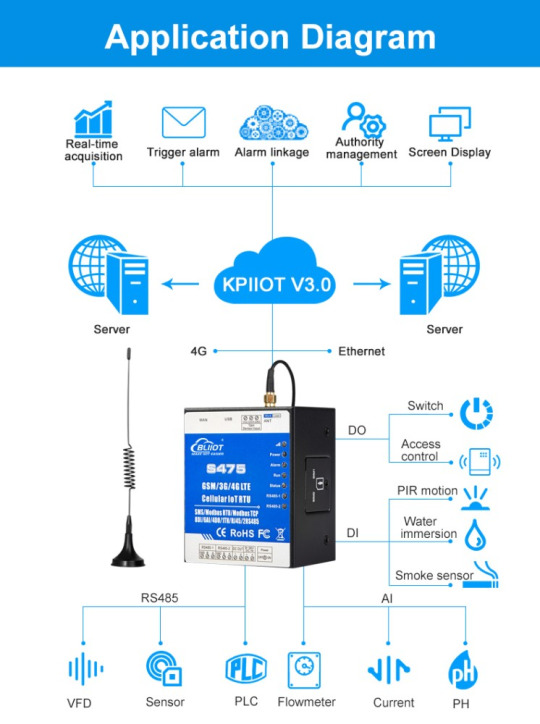
Features
Device monitoring
When equipment is connected to the cloud platform, the latest data can be viewed in real time, making real-time monitoring more reassuring.
Remote monitoring
Remotely send commands to control the boiler through the cloud platform, and deal with emergencies in an emergency.
Abnormal alarm
When there is an abnormal situation in the boiler operation, the user can be notified through various channels such as sms,app,wechat,phone call ect.to ensure that the alarm information is delivered in real time.
Data analysis
Combined with the big data of the Internet of Things, it conducts trend analysis and risk early warning assessment for equipment data.

Solution advantage
1.Support real-time video monitoring.
2.Multi-person notification ensures that the alarm information is delivered on time.
3.Combustible gas detection, immediately alarm in case of gas leakage.
4.Emergency treatment, remote treatment and rapid response in case of emergency,Multi-point monitoring, the same account can monitor multiple devices at the same time.
5.No distance limitation, using mature bliiot cloud platform + 4G transmission global monitoring.
6.Historical record preservation, the platform saves historical data for up to half a year, and supports historical record download and export.
7.Comprehensive monitoring of water temperature, pressure, switch, steam pressure, steam flow, boiler operation and other parameters.
More information about the BLIIoT Smart Boiler Remote Monitoring System RTU Gateway S475: https://www.bliiot.com/remote-terminal-units-p00178p1.html
0 notes
Text
The Future is Connected: 5 Top IoT Trends to Watch in 2023
IoT is transforming how we live and work as a result of the quick advancement of IoT technology. IoT is altering not only the way we live, but also the way we think in this linked world. The Internet of Things has been applied everywhere, from smart cities to smart homes, smart transportation to smart healthcare, etc. This article will introduce 5 must-see IoT trendsᅠthat will help us better grasp this IoT world of limitless potential.
Trend 1: Convergence of AI and IoT
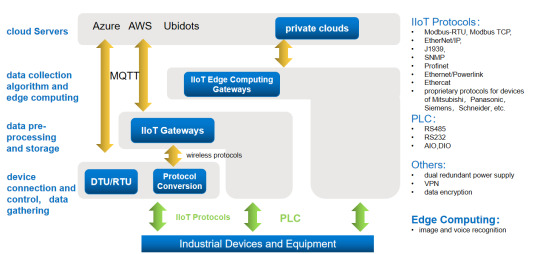
By utilizing sophisticated algorithms and machine learning techniques, devices like IoT Edge gateway can analyze and interpret data in real time, make informed decisions and take autonomous actions. The combination of AI and IoT enables IoT devices to adapt to changing environments, optimize their operations and provide users with a personalized experience. AI can enhance IoT devicesin the following ways:
Sophisticated Data Analysis
AI algorithms can process and analyze the massive amounts of data generated by IoT. IoT devices can identify trends, abnormalities, and patterns in data by leveraging methods like machine learning and deep learning. This analysis provides valuable insights for optimizing processes, predictive maintenance, and detecting potential risks or fanalysis.
Intelligent Automation
AI enables IoT devices to intelligently automate tasks and processes. IoT devicesᅠmay automate routine tasks, change settings, and reduce energy usage by learning from past data and user behavior. For instance, a smart thermostat may learn how the inhabitants want their temperature and regulate the heating or cooling appropriately, saving energy and enhancing comfort.
Real-time Decision
IoT devices can use artificial intelligence to make choices in real time based on the data they gather and examine. This makes it possible to respond quickly to changing conditions or events.ᅠFor instance, AI algorithms may evaluate patterns of power consumption in smart grid systems and modify power distribution to guarantee effective use and avoid blackouts.
Trend 2: 5G promotes the advancement of IoT
The Internet of Things is expanding quickly, and as its many sensors and gadgets go online, they will gather enormous volumes of data. 5G is the fifth generation of mobile communication technology. High speed, low latency, and enormous capacity are its key characteristics.ᅠIn IoT applications, it can provide faster data transmission speed and more stable and efficient network support.
The Internet of Things will be able to achieve higher transmission speeds and reduced latency when 5G technology is widely adopted, which will have a significant influence on many Internet of Things applications. Some applications, such real-time monitoring, remote control, smart manufacturing, etc., which are now constrained by network speed and latency, will be able to achieve more efficient and quicker data transfer and processing, increasing efficiency and lowering costs.
In addition, the large bandwidth capability of 5G technology will make it easier to transmit high-definition video, which is very beneficial for applications in smart cities, smart transportation and other fields. For example, to accomplish more accurate and real-time road condition analysis, enhance traffic flow, and lessen congestion in intelligent transportation, the data on road condition acquired by high-speed cameras may be communicated in real-time to the central control system.
Applications like self-driving vehicles will benefit greatly from 5G's reduced latency characteristics. Fast and low-latency data transfer is essential in self-driving automobiles so that the vehicle can gather knowledge about its surroundings in time for immediate decision-making and action.
Trend 3: Wide uses of Sensors
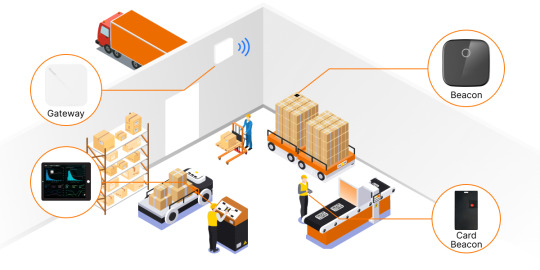
Sensors can be used in the medical industry to track patients' physiological parameters, such as their heart rate, blood pressure, blood sugar, etc., enabling remote monitoring and prompt patient intervention. In order to achieve intelligent traffic management and optimization, sensors may be utilized in the transportation sector to monitor things like road conditions, vehicle and pedestrian movement, etc. The use of sensors in the industrial sector can enable smart production and preventive maintenance by tracking the operational conditions, temperature, pressure, etc. of machinery and equipment. Sensors may be used in the smart home to monitor how much energy is consumed by each appliance, and the smart gatewayᅠcan evaluate this data and automatically change the power consumption mode of these appliances to save energy.
What’s more, the wide application of sensors will bring more data, which will provide more opportunities for data analysis and technological innovation. By combining artificial intelligence and big data analysis, we can better understand and predict various scenarios, so as to formulate more accurate strategies and decisions.
Trend 4: The Rise in Popularity of Smart Homes
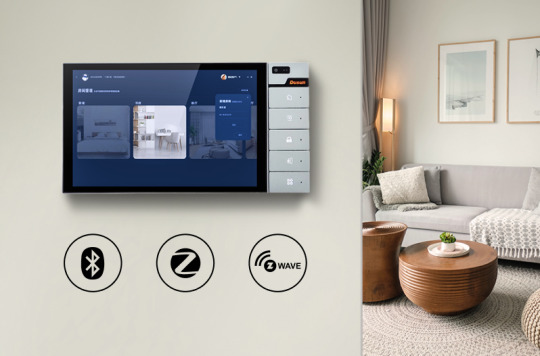
Remote Control
First, IoT technology enables smart home gadget remote control. Users may operate electrical appliances, lighting, security systems, and other things at home whenever and wherever they want using mobile phone applications or other smart devices. For instance, users can change the temperature before they leave the house, switch on the door locks, and turn on the heating before they go home.
Automated Operation
Second, smart device automation is a reality thanks to Internet of Things technologies. Smart home appliances are able to react automatically to user actions or events in the house thanks to predefined rules or clever algorithms. For instance, the smart door lock might be set to activate immediately when the user opens the door, the light could be set to the proper brightness and color temperature, and the TV could be set to automatically switch on and start playing the user's preferred show.
Security Enhancement
The security of the home can also be enhanced by IoT technology. Smart home gadgets, such as door and window opening and shutting, smoke alarms, etc., may be linked to the security system to track the security status of the house in real time. These devices can simultaneously evaluate and forecast user behavior patterns using big data in order to send out alarms on time or take appropriate action in anomalous circumstances.
Data Sharing
Last but not least, IoT technology can facilitate the networking and sharing of home appliances. Smart home appliances may exchange data and resources with other smart devices to provide more sophisticated services. Voice assistant, for instance, may be linked to other smart devices to provide voice control and intelligent question-and-answer functionality, offering customers additional practical life services.
Trend 5: The Explosive Growth of Wearable Devices
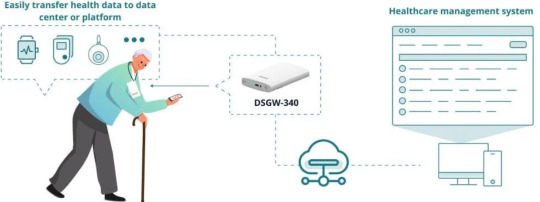
More Personalized Services
As technology continues to improve and innovate, IoT wearable devices will be better equipped to track users' physiological and activity data, enabling more individualized and tailored services for consumers. Wearable technology, for instance, can offer more precise health management and exercise suggestions depending on the user's health state and activity data.
More Advanced User Interaction
As artificial intelligence technology advances, wearable IoT devices will be able to communicate with people in a more sophisticated way. Users can more easily operate other smart devices with wearable technology or access more sophisticated services, for instance, through voice recognition, gesture recognition, and other technologies.
More Efficient Data Analysis
As big data technology advances, the information gathered by IoT wearable devices will be processed and used more effectively. We can better understand consumer demands and behavior patterns through data mining and analysis, enabling us to offer services that are more precise.
Richer Application Scenarios
Wearable technology will be used in more situations as it continues to advance and innovate, including those involving health care, sports, security, education, etc. For instance, remote education using smart glasses, remote medical care through smart watches, etc.
Final Words
IoT is generally the way of the future, and it is revolutionizing both our personal and professional lives.We have reason to anticipate that the Internet of Things will offer more shocks and improvements as science and technology continue to advance, improving the intelligence, convenience, and beauty of our lives.
0 notes
Text
IoT BMS: Best Solutions by Zenatix
Revolutionize your facility management with Zenatix's IoT BMS. This innovative solution combines the power of IoT technology with intelligent data analytics to optimize energy usage, enhance operational efficiency, and reduce costs. Gain real-time insights into your building's performance, monitor energy consumption, and proactively identify areas for improvement. With Zenatix's IoT BMS, you'll unlock the potential for smarter decision-making, increased sustainability, and a seamless user experience. Experience the future of building management today.
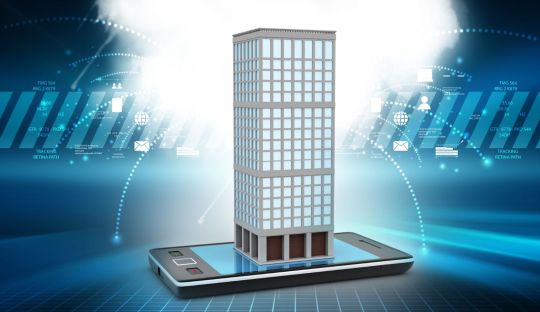
#iot bms#building management system#energy management system#energy analytics#smart buildings#connected buildings#IoT Gateway#ITOT#temperature monitoring#fault detection and diagnosis
0 notes
Text
Exploring the Boundaries of Technology
Welcome to the TechCompose blog, where we delve into the ever-evolving landscape of technology. At TechCompose, we are passionate about exploring the latest trends, innovations, and advancements that shape our digital world. Whether you're a tech enthusiast, a professional in the industry, or simply curious about the future of technology, this blog is your gateway to insightful discussions, practical insights, and exciting discoveries.
Who We Are
TechCompose is a team of dedicated individuals with a shared love for all things tech. From software development to artificial intelligence, from cybersecurity to blockchain, we are constantly exploring the frontiers of technology to bring you the most relevant and intriguing content. Our diverse backgrounds and expertise allow us to offer unique perspectives on the complex and dynamic world of technology.
What We Do
Through our blog, we aim to:
Inform: Stay updated on the latest trends, news, and breakthroughs in the tech industry.
Educate: Deep dive into complex topics, providing clear explanations and actionable insights.
Inspire: Explore the potential of technology to drive innovation, solve problems, and shape the future.
Connect: Engage with our readers, fostering a community of tech enthusiasts and professionals.
Topics We Cover
Our blog covers a wide range of topics, including but not limited to:
Software Development: From programming languages and frameworks to best practices and case studies.
Artificial Intelligence and Machine Learning: Exploring the latest advancements, applications, and ethical considerations.
Cybersecurity: Strategies for protecting data, networks, and systems in an increasingly digital world.
Blockchain and Cryptocurrency: Understanding the potential of decentralized technologies and their impact on various industries.
Internet of Things (IoT): Exploring the connected devices and smart systems that are transforming our daily lives.
Cloud Computing: Harnessing the power of cloud platforms for scalable, flexible, and cost-effective solutions.
Tech Trends and Future Forecasts: Examining emerging technologies and predicting their impact on society and business.
Join Us on the Journey
We invite you to join us on this exciting journey through the world of technology. Whether you're a seasoned professional, a curious enthusiast, or simply someone who wants to stay informed about the latest tech trends, there's something for everyone at TechCompose. Subscribe to our blog, engage with our content, and be part of the conversation as we explore the boundless possibilities of technology together.
Stay tuned for our upcoming articles, interviews, tutorials, and more. Let's embark on this journey of discovery, innovation, and inspiration. Welcome to TechCompose!
2 notes
·
View notes
Text
What is the difference between LoRa and LoRaWAN?
Introduction:
LoRaWAN serves as the communication protocol connecting the LoRa signal (which carries sensor data) to the respective application(s). To simplify, think of LoRa as the radio signal transporting the data, while LoRaWAN acts as the governing framework that dictates how this data travels and communicates within the network.

What is LoRa?
LoRa, short for Long Range, is a wireless technology known for its extended range and energy-efficient characteristics. It operates within unlicensed wireless frequencies, similar to how Wi-Fi utilizes the unregulated 2.4 GHz and 5 GHz bands. The specific frequency employed by LoRa varies depending on the geographic location of the deployment. For instance, in North America, LoRa operates in the 915 MHz band, while in Europe, it utilizes the 868 MHz band and in India it is 865 MHz to 867 MHz.
It is crucial to be aware of the legally permitted frequencies for LoRa deployments in each respective location. In terms of its communication range, LoRa can transmit data up to a distance of 10 kilometers in ideal conditions with a clear line of sight.
Low Power Wide Area (LPWA) technology can be categorized into two main types. On one hand, there's cellular LPWA, which utilizes mobile networks. Examples of cellular LPWA technologies include Narrowband IoT (NB-IoT) and Long Term Machine Type Communications (LTE-M). On the other hand, there's non-cellular LPWA like LoRa, which disseminates data by dividing it into encoded packets and transmitting them across various frequency channels and data rates.
What is LoRaWAN?
LoRaWAN is a network protocol that serves as the bridge between the LoRa signal, which carries sensor data, and the applications that use this data. In simpler terms, LoRa represents the radio signal responsible for transmitting the data, while LoRaWAN is the communication protocol that manages and defines how this data is transmitted across the network.
LoRaWAN offers several valuable advantages, including low power consumption, extensive coverage range, and cost-effective connectivity for devices that don't require high data transfer speeds. It's an excellent choice when cellular connectivity is too expensive or Wi-Fi coverage is unavailable. Some of the most compelling use cases for LoRaWAN include:
Agriculture: LoRaWAN's long-range capabilities provide reliable connectivity for rural applications where high data transfer rates are not necessary, making it ideal for agricultural applications. LoRaWAN sensors for agriculture are used for cattle management, soli monitoring, and temperature monitoring.
Asset Tracking and Logistics: LoRaWAN supports cost-effective location tracking of assets, with optimized battery life, making it a practical choice for asset management and logistics.
Smart Metering: LoRaWAN's sensors have the ability to reach even in underground utility locations makes it a suitable choice for smart metering applications.
Smart Homes: LoRaWAN can penetrate obstacles like walls and supports battery-powered devices with low data consumption, making it an attractive connectivity option for smart home applications.LoRaWAN sensors for smart homes are used for Air quality monitoring, water quality monitoring, and temperature & humidity monitoring.
Healthcare: The low power consumption, affordability, and reliability of LoRa technology make it suitable for connected health applications. IoT solutions based on LoRa hardware can monitor high-risk patients or systems around the clock, ensuring comprehensive health and medical safety management.LoRaWAN Gateways and sensors enhance production practices, enable efficient tracking and monitoring of shipments, and facilitate the development of cutting-edge medications.
Industrial Applications: LoRa-enabled devices and sensors play a crucial role in the transformation of industrial IoT operations like mentioned above. They digitize legacy processes and equipment, leading to increased profits, lower costs, and enhanced efficiency. These devices provide real-time data for predictive maintenance, machine health monitoring, reduced downtime, and more.
3 notes
·
View notes
Text
CES 2023: MediaTek Shows Off Latest in Wi-Fi and IoT Tech
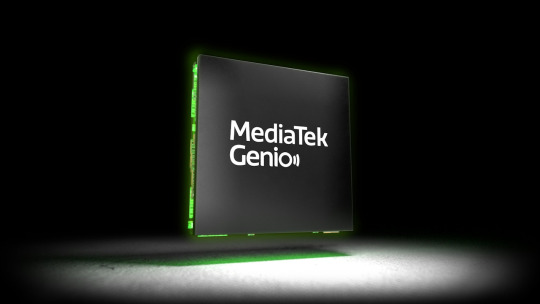
The new year has finally arrived, and we’re getting a load of awesome tech to go along with it. As such, MediaTek has announced several new technologies ahead of the Consumer Electronics Showcase (CES) 2023 in Las Vegas, and they bring some promising new advancements for Wi-Fi and smart home technology. Let’s take a look! Genio 700 Platform To kick things off, the company announced its latest addition to its Genio platform for IoT devices, which aims to bring improvements to smart home and smart retail tech, to name a couple. In particular, the series’ MediaTek Genio 700 is an octa-core chipset designed for just this purpose, featuring two ARM A78 cores running at 2.2GHz and six ARM A55 cores at 2.0GHz while providing 4.0 TOPs AI accelerator. It also comes with support for FHD60+4K60 display, as well as an ISP for better images. According to Richard Lu, Vice President of MediaTek IoT Business Unit: “When we launched the Genio family of IoT products last year, we designed the platform with the scalability and development support that brands need, paving the way for opportunities to continue expanding. With a focus on industrial and smart home products, the Genio 700 is a perfect natural addition to the lineup to ensure we can provide the widest range of support possible to our customers.” The Genio 700 SDK will allow designers to customize products using Yocto Linux, Ubuntu, and Android. With this support, customers can easily develop their own products with a minimal amount of effort, regardless of application type. Additionally, the chipset will have support for high-speed interfaces, including PCIe 2.0, USB 3.2 Gen1 and MIPI-CSI interface for cameras, Dual-Display support including FHD60+4K60 with AV1, VP9, H.265 and H.264 (video decode) support, industrial grade design and wide temp with 10 years longevity, ARM SystemReady certification for providing a standard and easy way to integrate the platform, as well as ARM PSA certification for increased security. The Genio 700 will be commercially available in Q2 2023. Wi-Fi 7 Ecosystem MediaTek also unveiled its new Wi-Fi 7 ecosystem, making it one of the first adopters of the fastest Wi-Fi tech available right now. The company says that this new breakthrough is the result of investing into Wi-Fi 7 technology, aimed at improving always-on connected user experiences for use across smart devices, streaming products, residential gateways, and more. As per Alan Hsu, MediaTek’s corporate vice president and general manager of the Intelligent Connectivity Business unit: “Last year, we gave the world’s first Wi-Fi 7 technology demonstration, and we are honored to now show the significant progress we have made in building a more complete ecosystem of products. This lineup of devices, many of which are powered by the CES 2023 Innovation Award-winning Filogic 880 flagship chipset, illustrates our commitment to providing the best wireless connectivity.” To put it simply, Wi-Fi 7 uses r320MHz channel bandwidth and 4096-QAM modulation to improve overall speeds and user experience. Multi-Link Operation (MLO) also enables Wi-Fi connections to aggregate channel speeds and greatly reduce link interruption in congested environments. MediaTek’s Wi-Fi 7 solution uses a 6nm process, which reduces power consumption by 50%, a 25x reduction in CPU utilization, and 100x lower MLO switch latency. 4T5R and penta-band mesh are also included to address a larger area of coverage and higher number of linked devices. The company also demoed several devices which use its latest Filogic chips, combining Wi-Fi 7 access point technology to broadband operators, retail router channels and enterprise markets. In particular, MediaTek’s Filogic 380 chipset is designed to bring Wi-Fi 7 connectivity to all client devices, including TVs, smart devices, and computers. With that said, MediaTek’s push to innovate and integrate Wi-Fi 7 technology was met with much praise, particularly from its partners including AMD, Lenovo, ASUS, TP-Link, BUFFALO LINK, Korea Telecom, Hisense, Skyworks, Qorvo, Litepoint, and NI. MediaTek x Federated Wireless Additionally, MediaTek has also been working with Federated Wireless in successfully completing interoperability testing for Automated Frequency Coordination (AFC) on MediaTek Filogic Wi-Fi 7 and Wi-Fi 6E chips. For those unfamiliar with the term, AFC systems allow for standard power operation for indoor and outdoor unlicensed devices, including 5G CPEs, fiber gateways, and ethernet gateways, to transmit over 850 MHz of spectrum in the 6 GHz frequency band. This improves range for Wi-Fi products, as well as faster connectivity speeds and improved capacity, which comes into play alongside the arrival of Wi-Fi 7 technology. According to Alan Hsu, MediaTek’s corporate vice president of Connectivity: “Our leadership in Wi-Fi technology would not be complete without ensuring our customers have easy access to AFC solutions. We are very happy to partner with Federated Wireless and to have finished an extensive series of integration testing. Our Filogic Wi-Fi 7 and 6E chips, including the CES 2023 Innovation Award-winning Filogic 880, will soon support Standard Power operation in the 6GHz spectrum for companies producing Wi-Fi devices.” The aforementioned AFC interoperability testing consisted of a set of positive and negative tests drawn from the Wi-Fi Alliance (WFA) AFC System certification specification. The positive tests included verifying the proper AFC calculation and response of spectrum availability at several locations, while the negative tests included verifying proper AFC System error handling. Kurt Schaubach, chief technology officer at Federated Wireless states: “We are proud to partner with MediaTek to perform these critical interoperability tests to ensure that the commercial industry is ready for standard power device operations to begin. Federated Wireless prides itself on being a premier collaborator with our partners and customers interested in spectrum sharing solutions.” The completion of these tests will allow customers to use Federated Wireless’ AFC system on MediaTek Filogic Wi-Fi 7 and 6E chips (upon full approval by the FCC). Read the full article
3 notes
·
View notes
Text
Just want to share with you guys our new Bluetooth Gateway. What can you do with it?
2 notes
·
View notes
Text
ipcs global
Empowering Careers in Automation and Beyond: IPCS Global, Kollam
As the world swiftly advances in technology, the demand for specialized training in automation, embedded systems, building management systems, and industrial robotics has skyrocketed. IPCS Global, a premier player in the field of industrial automation and digital marketing training, has been at the forefront of equipping professionals and students with cutting-edge skills to thrive in this evolving landscape. The Kollam branch of IPCS Global stands out as a key hub, strategically positioned to serve as a gateway to hands-on learning, industry-grade technology, and career transformation.
A Global Vision, Locally Realized in Kollam
IPCS Global, established with a mission to bridge the gap between traditional education and modern industry requirements, has expanded its footprint worldwide. In Kollam, the institution offers an extensive array of training programs, from entry-level certifications to advanced diplomas, all tailored to meet the ever-changing demands of industries like automation, IoT, and artificial intelligence. The institution's core strength lies in its hands-on approach, which ensures that students don’t just learn theories but master practical skills required in real-world applications.
Specialized Training Programs
IPCS Global’s Kollam branch is known for offering specialized training that caters to a diverse range of fields:
Industrial Automation: With courses that cover PLC, SCADA, HMI, and DCS systems, IPCS Global ensures students gain practical experience on equipment they’ll encounter in the field.
Building Management Systems (BMS): Students learn how to manage and optimize energy efficiency and security in commercial buildings, preparing them for roles in facilities management and building automation.
Embedded Systems and Robotics: The branch offers cutting-edge training on microcontrollers, Arduino, and Raspberry Pi, as well as industrial robotics, enabling students to thrive in this era of smart devices and automation.
Digital Marketing: Expanding beyond technical disciplines, IPCS Global provides comprehensive digital marketing training, making it an ideal choice for individuals interested in leveraging online platforms for business growth.
Industry-Relevant Certification
The certifications from IPCS Global are industry-recognized, which enhances the employability of students in the job market. With affiliations to leading organizations and global certifying bodies, the Kollam branch maintains high standards in both curriculum and training methodologies. Each course is designed by industry experts and regularly updated to ensure it aligns with current technological advancements.
A Gateway to Career Success
IPCS Global Kollam’s graduates have gone on to secure positions in renowned companies worldwide. The institution's extensive network, combined with a strong alumni base, ensures that students have a wide array of job opportunities upon completing their courses. Regular campus placement drives and partnerships with industry giants facilitate direct entry into roles across automation, engineering, IT, and beyond.
Conclusion
IPCS Global’s Kollam branch continues to empower the next generation of engineers, technicians, and marketers with the skills needed to excel in high-demand, technology-driven industries. By blending practical training with career-focused education, IPCS Global serves as a crucial stepping stone for students and professionals aiming to make a mark in today’s competitive job market.
0 notes
Text
BLIIoT Industrial 4G Edge Gateway Router R40 Used in Smart Agriculture Monitoring
The whole system consists three major parts: data acquisition part, data transmission part, and the data management center part. The data transmission part adopts the wireless modem R40 to upload the temperature, humidity, illumination, CO2 concentration and other collected parameters in the greenhouse to the cloud platform in real time through network. Through data monitoring and analysis, the remote monitoring system is able to remotely control the wet curtains, fans, spray and drip irrigation, internal and external sunshades, top and side windows, heaters and lights and other equipment to ensure that the greenhouse environment is most suitable for crop growth.
1 note
·
View note
Text
An Overview of Saudi Arabia Enterprises ICT Investment Market: Trends and Insights
The ICT investment market in Saudi Arabia has seen substantial growth as the nation pursues its Vision 2030 objectives, a national agenda aimed at economic diversification and digital transformation. With enterprises across sectors embracing advanced technologies, the ICT investment landscape in Saudi Arabia is marked by a robust focus on cloud computing, cybersecurity, AI, and IoT solutions.

For more insights on ICT infrastructure investment in Saudi Arabia, download a free sample
Below is an overview of the key trends, insights, and factors driving ICT investments in the Kingdom.
1. Market Drivers
Vision 2030 Initiative: Vision 2030 is a significant driver for ICT investments in Saudi Arabia, as it aims to diversify the economy beyond oil by fostering innovation, modernizing infrastructure, and enabling a knowledge-based economy.
Increased Digital Transformation: Saudi enterprises are rapidly adopting digital solutions to enhance efficiency, scalability, and productivity. This includes investments in cloud computing, big data analytics, and AI.
Growing E-Commerce Sector: As online retail gains traction in Saudi Arabia, there is heightened investment in ICT infrastructure to support e-commerce platforms, logistics solutions, and secure payment gateways.
Government Support and Funding: The Saudi government is a key player in promoting ICT initiatives, offering incentives, subsidies, and grants to enterprises investing in digital transformation. Programs like the National Transformation Program (NTP) bolster the ICT sector.
2. Key Trends
Cloud Computing and Data Centers: Cloud adoption has surged in Saudi Arabia, especially as enterprises look for cost-effective and scalable storage and computing solutions. Both public and private sector organizations are migrating workloads to the cloud. Leading cloud providers, such as AWS, Google Cloud, and Microsoft Azure, are establishing data centers in the region to meet demand and adhere to data residency regulations.
Cybersecurity Investments: As digital adoption rises, so do cybersecurity concerns. Cyber threats, including ransomware and data breaches, have driven enterprises to invest heavily in advanced cybersecurity solutions, such as multi-factor authentication (MFA), endpoint protection, and network security.
Artificial Intelligence (AI) and Machine Learning (ML): AI and ML are integral to the Saudi ICT strategy, with applications ranging from customer service automation to predictive analytics. Industries such as finance, healthcare, and logistics leverage AI for personalized customer experiences, risk assessment, and operational efficiency.
Internet of Things (IoT) and Smart Cities: IoT is gaining momentum in Saudi Arabia, particularly in the context of smart city projects like NEOM and the Red Sea Project. Investments in IoT devices and infrastructure facilitate real-time monitoring, efficient energy management, and connected transport systems.
5G and Telecommunications: The deployment of 5G technology across Saudi Arabia has been a game-changer, enabling high-speed connectivity and facilitating the development of IoT, autonomous vehicles, and smart city projects. Telecom providers such as Saudi Telecom Company (STC), Mobily, and Zain are rapidly expanding 5G coverage.
3. Challenges
Data Privacy and Regulatory Compliance: With an increase in digital services, enterprises face regulatory challenges concerning data privacy and protection, especially in sectors like banking, healthcare, and government. Adhering to local and international standards while ensuring data residency within Saudi Arabia adds complexity to ICT investments.
Skills Gap and Talent Shortage: The rapid growth in ICT demand has led to a skills gap, particularly in areas like cybersecurity, AI, and cloud computing. While the government has launched initiatives to address this gap, enterprises still face challenges in recruiting skilled professionals locally.
High Initial Costs of Advanced Technologies: The upfront costs of adopting technologies like AI, IoT, and 5G can be prohibitive for small and medium-sized enterprises (SMEs). Despite government support, smaller firms often struggle to keep pace with larger players in terms of digital investment.
4. Key Sectors Driving ICT Investment
Banking, Financial Services, and Insurance (BFSI): The BFSI sector is a major investor in ICT, focusing on digital payment solutions, cybersecurity, and regulatory technology. Banks and financial institutions are also leveraging AI for fraud detection, customer insights, and enhanced service delivery.
Healthcare: Healthcare has become a priority sector, with substantial investments in telemedicine, electronic health records (EHR), and AI-driven diagnostics. ICT investments in healthcare aim to improve service accessibility, patient outcomes, and operational efficiency.
Retail and E-commerce: The e-commerce boom has driven ICT investments in the retail sector, with a focus on customer experience, supply chain optimization, and secure payment gateways. Enterprises invest in analytics, AI, and CRM systems to enhance customer engagement and personalize marketing efforts.
Oil and Gas: As Saudi Arabia’s primary industry, oil and gas companies are investing in IoT, AI, and analytics to improve operational efficiency, safety, and asset management. Digital solutions are particularly important in predictive maintenance and real-time monitoring.
Education: With the increasing demand for online education and e-learning platforms, the education sector has seen growing ICT investments. The focus here is on virtual classrooms, learning management systems (LMS), and data analytics for personalized learning experiences.
5. Key Players in the Saudi ICT Market
Saudi Telecom Company (STC): STC is a major player in the telecommunications sector, leading in the rollout of 5G and cloud services. It has also expanded its portfolio to include data centers and cybersecurity services.
Advanced Electronics Company (AEC): AEC provides ICT solutions in defense, healthcare, and energy sectors, focusing on digital transformation solutions tailored to Saudi Arabia’s unique needs.
SAP: SAP is a prominent player in enterprise software and cloud solutions, catering to industries ranging from healthcare to oil and gas. SAP has partnered with the government to drive digital initiatives in line with Vision 2030.
Oracle: Oracle is a key provider of cloud and database solutions in Saudi Arabia, especially popular in sectors like BFSI, healthcare, and education. Oracle has also invested in local data centers to comply with data residency requirements.
IBM and Microsoft: Both companies have a strong presence in the Saudi ICT market, offering cloud, AI, and cybersecurity solutions to enterprises. IBM has been involved in smart city projects, while Microsoft supports cloud adoption and digital transformation initiatives.
6. Future Outlook and Opportunities
Expansion of Cloud Infrastructure: With demand for data storage and processing on the rise, there is potential for further expansion in cloud infrastructure. As more companies adopt cloud-native solutions, local data centers will likely proliferate to meet regulatory and performance requirements.
Growing Demand for Cybersecurity: Given the increase in cyber threats, investment in cybersecurity solutions will continue to grow. There is a significant opportunity for companies offering advanced threat detection, identity and access management, and compliance solutions.
AI and Automation in Public and Private Sectors: The Saudi government’s push for AI development under Vision 2030 is encouraging enterprises across sectors to adopt AI for various use cases. With the establishment of the Saudi Data and Artificial Intelligence Authority (SDAIA), AI adoption is expected to rise in areas like healthcare, transportation, and finance.
IoT in Manufacturing and Energy: IoT technology is expected to further penetrate sectors like manufacturing and energy, where real-time monitoring and predictive maintenance are crucial. Investment in IoT infrastructure will be essential for achieving Vision 2030 goals, especially in the context of smart cities and the energy sector.
Conclusion
The ICT investment landscape in Saudi Arabia is rapidly advancing, fueled by government-led initiatives, increased digital adoption, and technological advancements. Key players such as STC, SAP, Oracle, and Microsoft are well-positioned to leverage the growing demand for cloud, AI, cybersecurity, and IoT solutions. Although challenges like the skills gap and data privacy concerns persist, the market’s future is promising as enterprises invest in digital solutions that align with the Vision 2030 strategy. With continued support from the government and the private sector, Saudi Arabia’s ICT investment market is set to grow significantly in the coming years, supporting the nation’s transition to a diversified, knowledge-driven economy.
0 notes
Text
BLIIoT Industrial IoT Edge Gateway R40 used in Smart Greenhouse Monitoring
1. Background
The cultivation of crops in greenhouses has brought great convenience to our lives and has been widely promoted and applied. In seasons when it’s not suitable for plant growth, ensuring the greenhouse growth period and yield of crops is very demanding to the environmental factors of the planting environment, like temperature, humidity, illuminance, and carbon dioxide concentration, etc. In order to create a suitable growth environment for crops, agricultural production personnel need to pay attention to various environmental indicators in real time and conduct correct cultivation management.
Therefore, BLIIoT delivers a smart agricultural greenhouse monitoring system using industrial router R40. It is able to monitor the variables in the greenhouses and help create conditions for high yield, high quality and improve efficiency for agricultural production.
2. Greenhouse Smart Monitoring Solution
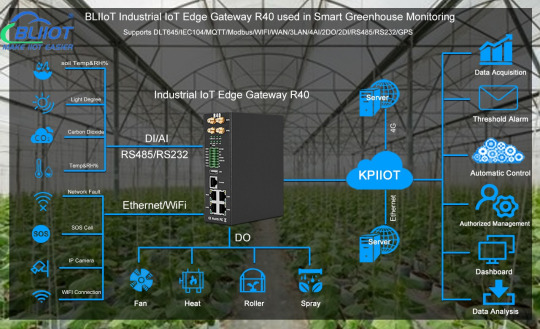
The whole system consists three major parts: data acquisition part, data transmission part, and the data management center part. The data transmission part adopts the wireless modem R40 to upload the temperature, humidity, illumination, CO2 concentration and other collected parameters in the greenhouse to the cloud platform in real time through network. Through data monitoring and analysis, the remote monitoring system is able to remotely control the wet curtains, fans, spray and drip irrigation, internal and external sunshades, top and side windows, heaters and lights and other equipment to ensure that the greenhouse environment is most suitable for crop growth.
The BLIIoT's 4G industrial router R40, featuring high data transmission rate, wide signal coverage, strong real-time performance, high security, low operating and maintenance costs, is used as the communications terminal to provide reliable network communications in unattended environments.
3. Advantages
4G Industrial Edge Gateway router R40
This router is an industrial IoT high-speed router, compatible with 4G/3.5G/3G/2.5G network, flagship
configuration, VPN link, industrial protection, wide temperature, wide voltage design, easy to set up high speed, stable, The wireless transmission network uses the public LTE network to provide users with wireless long-distance data transmission.
The 4G router adopts high-performance industrial-grade 32-bit communication processor and industrial-grade wireless module, with embedded real-time operating system as software support platform, and provides one RS232 or RS485, 3 LAN, 1 WAN and WIFI interface, which can be connected at the same time. Serial devices, Ethernet devices, and WIFI devices implement transparent data transmission and routing.
Kingpigeon Cloud Platform(KPIIOT)
KPIIOT is a powerful industiral internet of things cloud platform, it not only supports web server, but also supports Apps, email alerts, voice call, SMS alerts functions.
KPIIOT cloud platform provides APPs for users, the APPs are free charge. it makes the users can remotely mornitoring and control its assets by smart mobile phone or pads.
More information : https://www.iot-solution.com/search/?Keyword=R40&CateId=
0 notes
Text
Global US Market for 4G/5G Industrial Smart IoT Gateways: A Comprehensive Analysis of Growth, Trends, and Challenges:
The global U.S. market for 4G/5G industrial smart IoT gateways is expanding rapidly, driven by the need for efficient, scalable connectivity solutions in industrial sectors. As industrial facilities adopt smart technologies to improve productivity, reduce costs, and enhance safety, IoT gateways play a crucial role in connecting devices, sensors, and machines to networks that facilitate real-time data exchange and analytics. With the rise of 4G and 5G connectivity, IoT gateways have become essential components in enabling automation, remote monitoring, and predictive maintenance across various industries, including manufacturing, logistics, energy, and healthcare. This article provides an in-depth analysis of the current trends, market segmentation, growth drivers, and future outlook of the 4G/5G industrial smart IoT gateway market.
Market Overview and Significance of IoT Gateways
Industrial IoT gateways serve as intermediaries between IoT devices and cloud or data centers, allowing data from sensors and machines to be transmitted, processed, and analyzed in real-time. In industrial settings, IoT gateways facilitate communication between legacy machines and modern IoT platforms, thereby enabling digital transformation without requiring complete equipment overhauls. As manufacturing and industrial sectors digitize, these gateways are integral in creating interconnected environments where data can flow seamlessly across systems, making real-time monitoring, predictive maintenance, and process automation possible. The emergence of 4G and 5G networks has significantly enhanced the capabilities of these gateways, enabling faster, more reliable connections with minimal latency.
The U.S. market, as one of the most mature and technologically advanced IoT markets, has shown substantial growth in adopting 4G/5G IoT gateways. The push towards Industry 4.0 and the Industrial Internet of Things (Ilott) has catalyzed investments in advanced connectivity solutions, with enterprises aiming to streamline operations, improve productivity, and meet new demands for digitalization. These gateways are being deployed in various applications, from smart factories to autonomous transportation and beyond, reflecting a shift toward more adaptive and data-driven industrial practices.
MORE ABOUT REPORT: https://www.xinrenresearch.com/reports/global-us-market-4g5g-industrial-smart-iot-gateway-market/
Key Drivers of the 4G/5G Industrial Smart IoT Gateway Market
Growing Demand for Industrial Automation: Industrial automation has become a priority as companies seek to enhance operational efficiency, reduce downtime, and lower costs. IoT gateways enable factories to integrate multiple systems, allowing seamless data transfer and communication between devices on the factory floor. With real-time data access, companies can optimize processes, anticipate issues, and make data-driven decisions to boost productivity. The rise of 4G/5G connectivity has accelerated the adoption of smart gateways, as these networks support high-speed data transmission and low latency, enabling faster response times for critical applications.
Advancements in 5G Technology: The rollout of 5G networks is a transformative factor in the industrial IoT landscape. Unlike 4G, which is limited by latency and bandwidth constraints, 5G offers ultra-fast speeds, reduced latency, and greater device density, allowing for more complex and data-intensive applications. For example, 5G-enabled IoT gateways can support advanced use cases such as remote control of machinery, real-time asset tracking, and predictive maintenance. As 5G networks become more accessible, industries are expected to increasingly deploy 5G-enabled IoT gateways to unlock the full potential of their IoT infrastructure.
Rising Adoption of Edge Computing: Edge computing, which processes data closer to the source rather than relying solely on centralized cloud servers, is becoming critical in industrial IoT applications. IoT gateways equipped with edge computing capabilities enable faster data processing, reducing latency and ensuring more reliable, real-time decision-making. This trend is particularly important for industries like manufacturing and logistics, where immediate responses are crucial to operational efficiency and safety. Edge computing also minimizes the bandwidth requirements for sending data to the cloud, lowering costs and improving data security by limiting the amount of data that leaves the industrial environment.
Increased Focus on Predictive Maintenance: Predictive maintenance has emerged as a key application of industrial IoT, allowing companies to monitor the health of their equipment and predict potential failures before they occur. IoT gateways facilitate this by collecting data from sensors installed on machinery, analyzing it at the edge or sending it to the cloud for further analysis. With the high-speed capabilities of 4G/5G networks, gateways can transmit this data quickly, enabling real-time monitoring and alerting maintenance teams to take proactive measures. As companies aim to reduce downtime and extend the lifespan of their equipment, predictive maintenance will drive demand for advanced IoT gateways.
Market Segmentation
By Network Type: IoT gateways are often categorized based on the network they support, such as 4G, 5G, or hybrid networks. While 4G gateways are still widely used, 5G is gaining traction due to its superior speed and reduced latency, which make it ideal for data-intensive industrial applications. Hybrid gateways, capable of supporting both 4G and 5G, offer flexibility in transitioning from 4G to 5G, providing a cost-effective option for companies looking to future-proof their investments.
By Industry Application: Key industries utilizing 4G/5G IoT gateways include manufacturing, energy, logistics, healthcare, and agriculture. In manufacturing, these gateways enable smart factories, where data from machines and sensors is used to automate processes and enhance production efficiency. The energy sector uses IoT gateways for remote monitoring of infrastructure, such as wind turbines and solar panels, optimizing energy production and reducing maintenance costs. In logistics, IoT gateways facilitate real-time tracking of assets and vehicles, improving supply chain transparency. Healthcare applications include remote patient monitoring and asset tracking within medical facilities.
By Deployment Model: IoT gateways can be deployed on-premises or in the cloud, with each model offering distinct advantages. On-premises deployments offer enhanced control and security, particularly for companies in regulated industries or those dealing with sensitive data. Cloud-based gateways, on the other hand, provide scalability and flexibility, enabling remote access to data and analytics. Hybrid deployments, which combine on-premises and cloud models, are also gaining popularity, as they offer the benefits of both approaches.
By Component: IoT gateways consist of several components, including hardware, software, and services. The hardware segment comprises sensors, communication modules, and processing units, while the software segment includes edge analytics, data management, and security solutions. Services encompass installation, maintenance, and support, with managed services becoming increasingly important as companies seek third-party expertise to handle the complexities of IoT gateway deployment and management.
Challenges and Limitations
High Deployment Costs: Deploying 4G/5G IoT gateways in industrial settings can be costly, especially for small and medium-sized enterprises (SMEs) that may lack the financial resources to invest in such technology. The initial costs of purchasing and installing IoT gateways, along with ongoing maintenance and data processing costs, can be prohibitive for some companies. Additionally, the transition from 4G to 5G infrastructure requires significant investment, which may deter companies from adopting the latest technology.
Security Concerns: As IoT gateways connect numerous devices and systems, they become potential targets for cyberattacks. Industrial facilities often handle sensitive data related to production processes, equipment status, and supply chain operations, making data security a top priority. Ensuring the security of IoT gateways requires robust encryption, authentication, and network monitoring solutions, which can be complex and costly to implement. Any breach in an industrial IoT network can have severe consequences, including production delays, financial losses, and damage to a company’s reputation.
Integration with Legacy Systems: Many industrial facilities rely on legacy systems that may not be compatible with modern IoT gateways. Integrating IoT gateways with older machinery and equipment can be challenging, requiring custom solutions and significant technical expertise. This compatibility issue can slow down the adoption of IoT technology in industries where legacy equipment is still prevalent, limiting the potential benefits of real-time data monitoring and automation.
Network Availability and Reliability: While 5G promises high-speed, low-latency connectivity, its availability is still limited in certain areas, particularly in rural or remote locations where industrial facilities are often located. The lack of widespread 5G coverage means that some companies may need to rely on 4G or hybrid solutions, which may not offer the same level of performance. Ensuring reliable network connectivity is essential for IoT applications, especially those involving critical functions such as predictive maintenance and real-time monitoring.
Future Outlook and Opportunities
The future of the 4G/5G industrial smart IoT gateway market appears promising, with continued advancements in technology and the growing adoption of Industry 4.0 practices. The deployment of 5G networks is expected to accelerate in the coming years, enabling more industries to leverage high-speed connectivity for data-intensive applications. As 5G coverage expands, the adoption of 5G-enabled IoT gateways will likely increase, particularly in industries like manufacturing, energy, and logistics, where real-time data is essential for optimizing operations.
One of the key opportunities in this market is the integration of artificial intelligence (AI) and machine learning (ML) with IoT gateways. AI-powered gateways can analyze data at the edge, enabling predictive maintenance, anomaly detection, and process optimization without the need to send all data to the cloud. This integration can reduce latency, improve decision-making, and lower data transfer costs, making AI a valuable addition to IoT gateway technology.
MORE ABOUT REPORT: https://www.xinrenresearch.com
0 notes
Text
Energy Management System: Dynamic Solutions by Zenatix
Zenatix's Energy Management System is a dynamic solution that optimizes energy consumption, boosts efficiency, and reduces costs. With advanced analytics and intelligent controls, it empowers businesses to make data-driven decisions, mitigate waste, and achieve sustainability goals effortlessly. Maximize your energy potential with Zenatix and unlock unparalleled efficiency in every aspect of your operations.

#energy management system#energy management solution#energy analytics#building automation systems companies#building automation system#building management system#IOT BMS#IoT Gateway#predictive maintenance#Energy Monitoring System#remote asset management#remote monitoring iot#smart building
0 notes